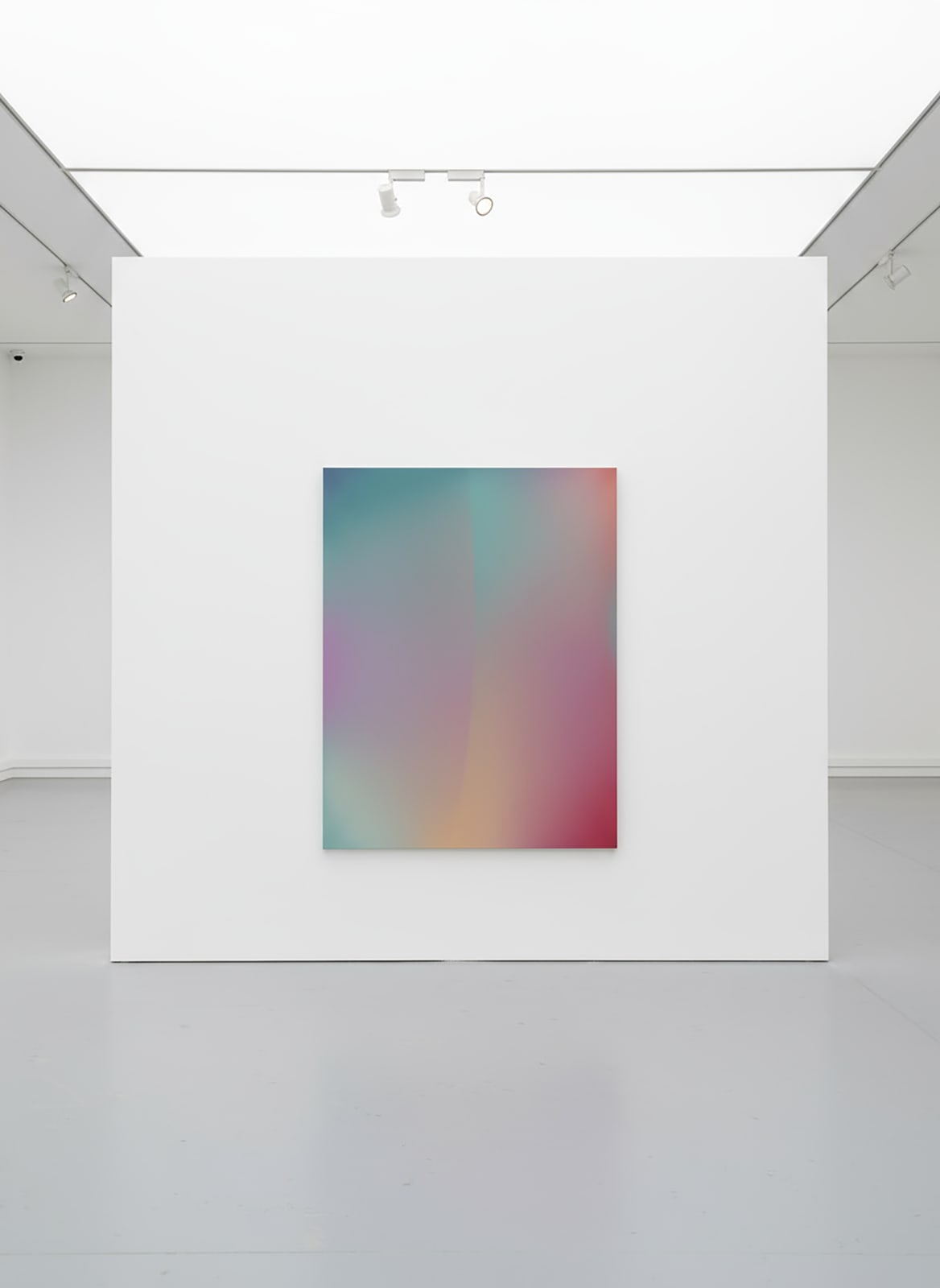Arthur Hoffmann
Digita_02, 2024
Acrylic on canvas, spray-gun application
162 x 130 cm
63 3/4 x 51 1/8 in
63 3/4 x 51 1/8 in
Further images
Arthur Hoffmann, zones of buoyancy The digital era, opened up by the advent of new technologies from the 1960s onward, has expanded the technical possibilities of painting. Rather than announcing...
Arthur Hoffmann, zones of buoyancy
The digital era, opened up by the advent of new technologies from the 1960s onward, has expanded the technical possibilities of painting. Rather than announcing its demise, it has granted painters new tools. Through these, they have radicalized – even exhausted – the reproducibility of the image in order to make visible the calculations it generates. From Christopher Wool to Albert Oehlen, via Wade Guyton, the canvas is no longer the support for a transcendence or spiritual contemplation; abstract expressionism was one of its last guardians. Today, the pictorial field, whether figurative or abstract, challenges classical oppositions and the dogma of rupture, preferring instead to continue deconstructing the prerequisites of perception. Arthur Hoffmann’s approach is part of this lineage. In his series Espace Illusoire (2020), the painting becomes an object endowed with a physical presence within the space we share and the screen that opens onto our gaze. The colored areas refer less to a form of abstraction than to an optical game negotiating with reality. Sprayed with an airbrush or painting gun, the pigments produce a velvety surface that accentuates the hypnotic blur effect. This technique updates the sfumato and alludes to the Gaussian blur of image-processing software. His work thus invites both a contemplative and sensory experience and a reflection on the boundaries of porous planes between material and virtual realities.
The gesture he employs is no longer that of the brush spreading matter across the canvas. Through the use of airless painting, the hand remains inexorably at a distance. Color is thus deposited onto the surface as a “thing,” endowed with a certain autonomy. While the pressure of the finger is controlled and the surface to be covered sometimes carefully delimited with the help of masks, a degree of randomness always remains in the process. The diffuse dispersion that interweaves the layers stems from this dose of indeterminacy. It also helps to question “the articulation between a visible recto and an intelligible verso” of the screen-painting. The aim is no longer to impose a one-way reading of painting from exterior to interior, but rather to make possible the inversion of these poles. Thus, one can reach that plane which, underlying its structure, is the zone where matter, space, and gaze meet.
Thomas Fort, 2024
The digital era, opened up by the advent of new technologies from the 1960s onward, has expanded the technical possibilities of painting. Rather than announcing its demise, it has granted painters new tools. Through these, they have radicalized – even exhausted – the reproducibility of the image in order to make visible the calculations it generates. From Christopher Wool to Albert Oehlen, via Wade Guyton, the canvas is no longer the support for a transcendence or spiritual contemplation; abstract expressionism was one of its last guardians. Today, the pictorial field, whether figurative or abstract, challenges classical oppositions and the dogma of rupture, preferring instead to continue deconstructing the prerequisites of perception. Arthur Hoffmann’s approach is part of this lineage. In his series Espace Illusoire (2020), the painting becomes an object endowed with a physical presence within the space we share and the screen that opens onto our gaze. The colored areas refer less to a form of abstraction than to an optical game negotiating with reality. Sprayed with an airbrush or painting gun, the pigments produce a velvety surface that accentuates the hypnotic blur effect. This technique updates the sfumato and alludes to the Gaussian blur of image-processing software. His work thus invites both a contemplative and sensory experience and a reflection on the boundaries of porous planes between material and virtual realities.
The gesture he employs is no longer that of the brush spreading matter across the canvas. Through the use of airless painting, the hand remains inexorably at a distance. Color is thus deposited onto the surface as a “thing,” endowed with a certain autonomy. While the pressure of the finger is controlled and the surface to be covered sometimes carefully delimited with the help of masks, a degree of randomness always remains in the process. The diffuse dispersion that interweaves the layers stems from this dose of indeterminacy. It also helps to question “the articulation between a visible recto and an intelligible verso” of the screen-painting. The aim is no longer to impose a one-way reading of painting from exterior to interior, but rather to make possible the inversion of these poles. Thus, one can reach that plane which, underlying its structure, is the zone where matter, space, and gaze meet.
Thomas Fort, 2024
Subscribe To Our Newsletter
Thank you for your interest in our gallery! We look forward to sending you personalised invitations and news on our upcoming exhibitions & artists.
* denotes required fields
We will process the personal data you have supplied in accordance with our privacy policy (available on request). You can unsubscribe or change your preferences at any time by clicking the link in our emails.






